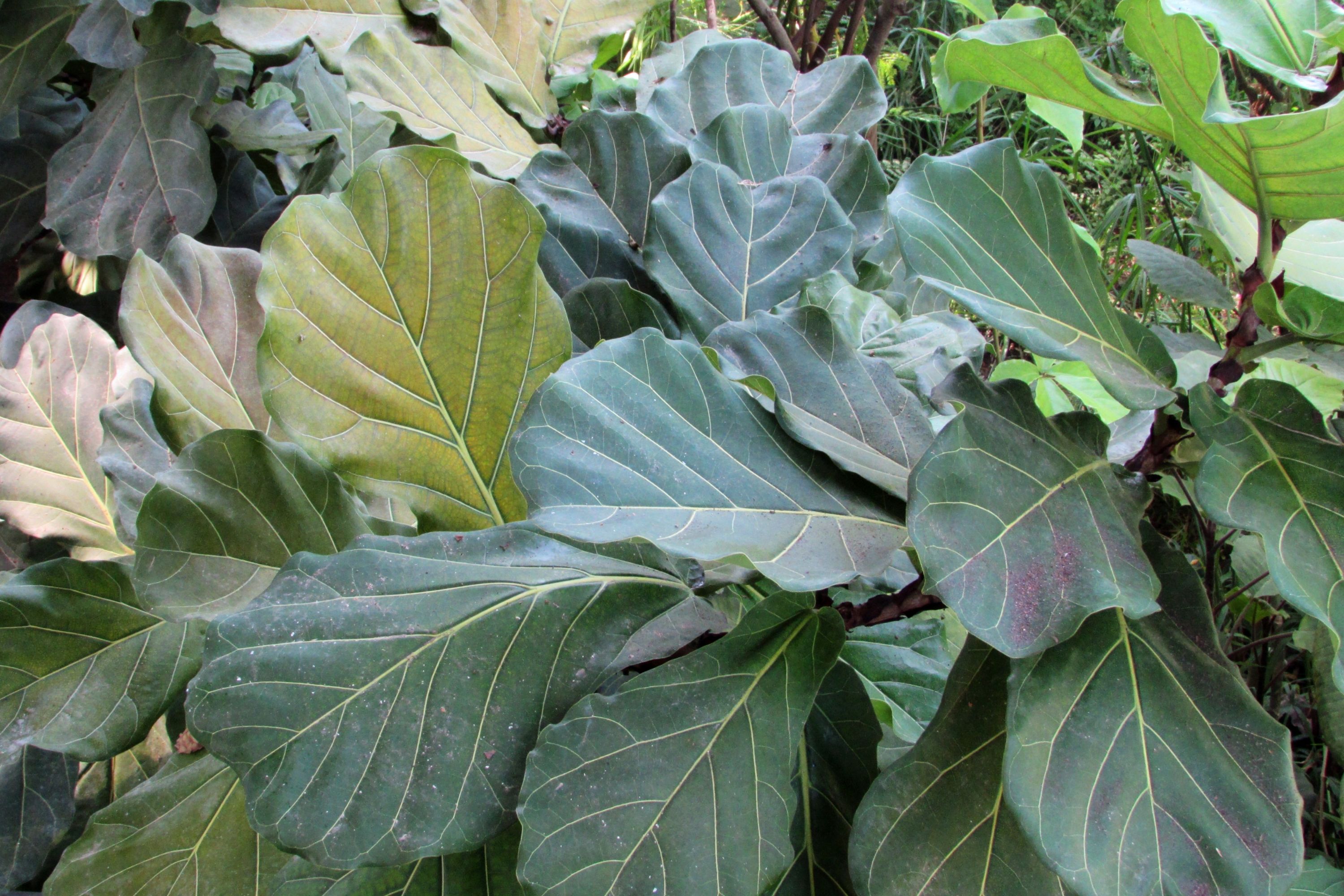Fiddle-leaf fig
(Ficus lyrata)

Description
Ficus lyrata, commonly known as the fiddle-leaf fig, is a popular indoor plant that belongs to the genus Ficus and the family Moraceae. This tropical plant is native to western Africa, from Cameroon to Sierra Leone, where it grows in lowland tropical rainforests. Its popularity as an indoor plant has soared in recent years, thanks to its striking appearance and low maintenance requirements. Description: Ficus lyrata is a large, evergreen tree that can grow up to 12-15 meters tall in its natural habitat. In cultivation, it typically grows to a height of 1-3 meters, making it an ideal indoor plant. The plant's most distinctive feature is its large, fiddle-shaped leaves that can grow up to 30-45 cm long and 20-30 cm wide. The leaves are dark green, glossy, and have prominent veins, which give them a striking appearance. The tree also produces small, insignificant flowers and round, purple fruit, which is edible but not commonly consumed. Cultivation: Ficus lyrata is relatively easy to cultivate, and it can thrive in a wide range of growing conditions. The plant prefers bright, indirect sunlight, and it should be protected from direct sunlight, which can scorch the leaves. It also prefers a warm and humid environment, so it is essential to keep the plant away from cold drafts and dry air. The plant should be watered regularly but should not be overwatered, as this can lead to root rot. It is best to allow the soil to dry out slightly between waterings. Ficus lyrata also benefits from occasional misting with water to increase humidity levels around the plant. Propagation: Ficus lyrata can be propagated by stem cuttings or air layering. Stem cuttings should be taken in the spring or early summer and should be at least 10 cm long. The cuttings should be allowed to dry for a day or two before being placed in a potting mix. The potting mix should be kept moist but not waterlogged, and the cuttings should be placed in a warm, bright location until roots develop. Air layering involves making a cut in the stem and wrapping it in moist sphagnum moss. The moss should be kept moist until roots develop, after which the stem can be cut and planted in a potting mix. Uses: Ficus lyrata is primarily used as an ornamental plant and is commonly grown indoors. Its striking appearance and low maintenance requirements make it a popular choice for interior design. The plant's large leaves also make it an effective air purifier, as they can absorb harmful pollutants from the air. In some parts of Africa, the bark of the tree is used to make rope, and the fruit is eaten, although this is not common. Pests and Diseases: Ficus lyrata is generally resistant to pests and diseases, but it can be susceptible to mealybugs and scale insects. These can be controlled with insecticidal soap or neem oil. Overwatering can also lead to root rot, which can cause the leaves to turn yellow and fall off. This can be prevented by ensuring that the plant is not overwatered and that it is planted in well-draining soil. Conclusion: Ficus lyrata is a stunning plant that is well-suited for indoor cultivation. Its large, fiddle-shaped leaves make it a striking addition to any interior design, and its low maintenance requirements make it a popular choice for those who want to bring a touch of the tropics into their homes. With proper care, this plant can thrive for many years and bring beauty and freshness to any space.
Taxonomic tree:







